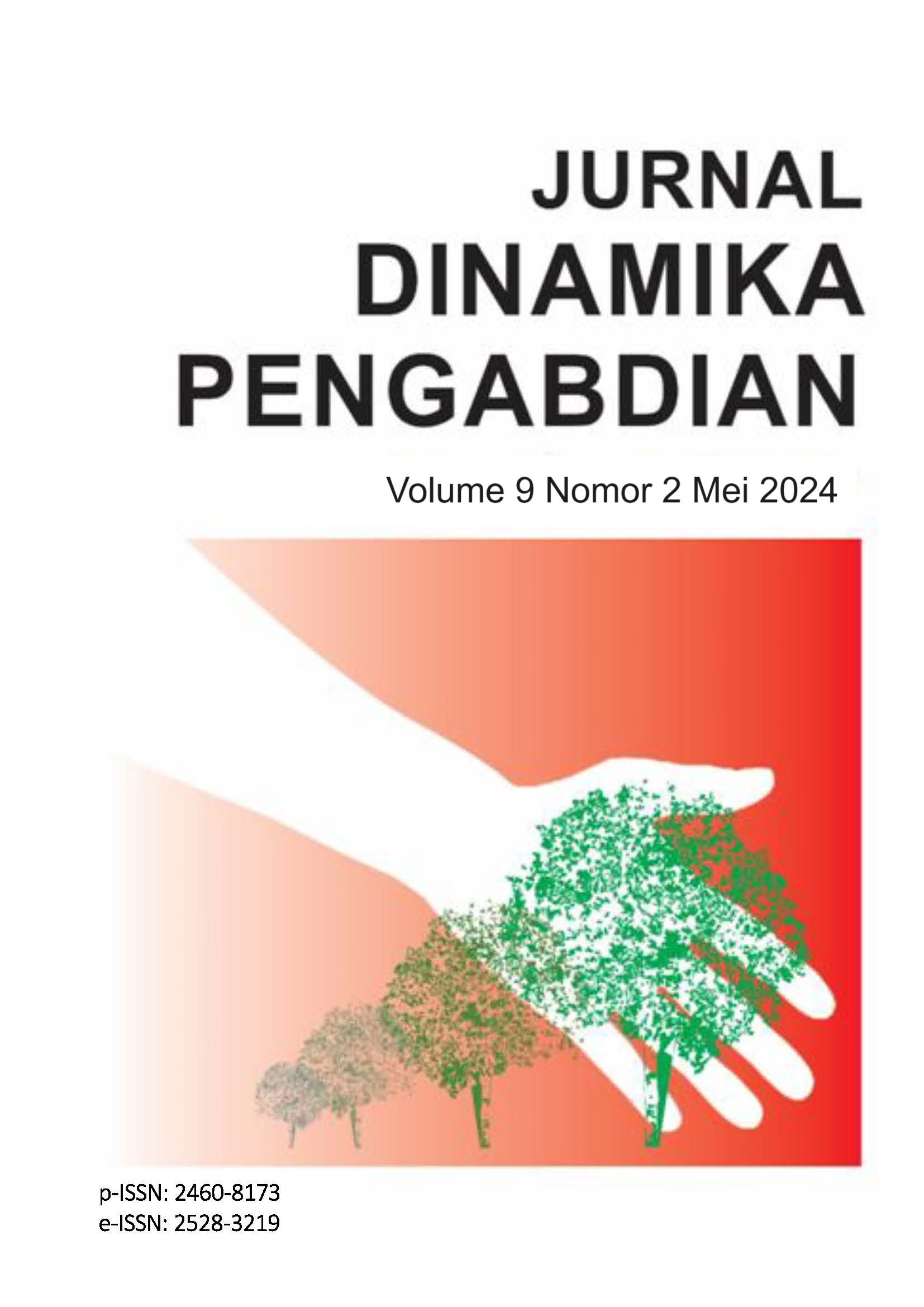PEMANFAATAN BIOCHAR DARI TONGKOL JAGUNG SEBAGAI PUPUK SLOW-RELEASE PADA LAHAN KEBUN KAKAO MILIK KELOMPOK TANI MAMMINASA DECENG DI KABUPATEN SOPPENG
DOI:
https://doi.org/10.20956/jdp.v9i2.24476Keywords:
Biochar, Biopori, Pupuk pelepasan lambat, Perkebunan, Tongkol jagungAbstract
Kandungan bahan organik merupakan salah satu indikator kesuburan tanah. Biochar sebagai bahan organik mampu meningkatkan kandungan C-organik sekaligus meningkatkan retensi hara di dalam tanah. Pemanfaatan biochar sebagai pupuk slow-release merupakan strategi peningkatan bahan organik sekaligus meningkatkan retensi hara untuk efisiensi pemupukan. Kegiatan ini bertujuan melakukan demonstrasi penggunaan biochar sebagai pupuk slow-release mulai dari pembuatan hingga aplikasi pada tanaman kakao. Luaran dari kegiatan ini adalah 6 orang dosen dari Universitas Muhammadiyah Parepare melakukan kegiatan di luar kampus dalam bentuk pengabdian kepada masyarakat dan 9 orang mahasiswa agroteknologi berkegiatan di luar kampus yang dapat mengkonversi CPMK dua mata kuliah, Budidaya Tanaman Pangan dan Perkebunan serta Kesuburan Tanah dan Pemupukan. Selain itu penerima manfaat yang lebih utama adalah Kelompok Tani Mamminasa Deceng sebanyak 25 orang. Dalam kegiatan ini diproduksi biochar sebanyak 3.780 liter yang dibuat pupuk slow-release dengan menggunakan pupuk NPK sebanyak 252 g yang dapat digunakan untuk pemupukan sebanyak 420 pohon kakao.
Kata kunci: Biochar, biopori, pupuk pelepasan lambat, perkebunan, tongkol jagung.
ABSTRACT
Organic matter content is an indicator of soil fertility. Biochar as an organic matter can increase the C-organic content while increasing nutrient retention in the soil. The use of biochar as a slow-release fertilizer is a strategy to increase organic matter while increasing nutrient retention for fertilization efficiency. This activity aims to demonstrate the use of biochar as a slow-release fertilizer starting from manufacture to application on cocoa plants. The output of this activity was 6 lecturers from Parepare Muhammadiyah University carrying out activities outside the campus in the form of community service and 9 agrotechnology students carrying out activities outside the campus who were able to convert CPMK to two courses in the cultivation of food crops and plantations as well as soil fertility and fertilization. In addition, the more important beneficiaries are the Mamminasa Deceng farmer group of 25 people. In this activity, 3,780 liters of biochar were produced, which was made into slow-release fertilizer using 252 g of NPK fertilizer to fertilize 420 cocoa trees.
Keywords: Biochar, biopori, slow-release fertilizer, plantation, corn cob.
References
Li, S., Barreto, V., Li, R., Chen, G., & Hsieh, Y. P. (2018). Nitrogen retention of biochar derived from different feedstocks at variable pyrolysis temperatures.
Manikandan, A., & Subramanian, K. S. (2013). Urea Intercalated Biochar – a Slow Release Fertilizer Production and Characterisation. December. https://doi.org/10.17485/ijst/2013/v6i12.11
Permentan. (2019). Persyaratan teknis minimal pupuk organik, pupuk hayati dan pembenah tanah.
Sukmawati. (2020). Perbaikan Retensi Air Fosfor dan Nitrogen dari Biochar yang ditambahkan Bakteri Penghasil Alginat Utuk Peningkatan Produktivitas Lahan Kering (Disertasi) [Pasca Sarjana Unhas]. http://repository.unhas.ac.id/id/eprint/3048/
Wang, C., Luo, D., Zhang, X., Huang, R., Cao, Y., Liu, G., Zhang, Y., & Wang, H. (2022). Environmental Science and Ecotechnology Biochar-based slow-release of fertilizers for sustainable agriculture : A mini review. Environmental Science and Ecotechnology, 10, 100167. https://doi.org/10.1016/j.ese.2022.100167
Downloads
Published
Issue
Section
License
Copyright (c) 2024 Jurnal Dinamika Pengabdian

This work is licensed under a Creative Commons Attribution 4.0 International License.
Penulis diwajibkan untuk menandatangani "Surat Perjanjian Hak Cipta" atau Copyright Agreement untuk penyerahan ijin kepada pihak jurnal untuk menerbitkan tulisannya.
Authors are required to sign a "Copyright Agreement" to submit permission to the journal to publish their writings.



